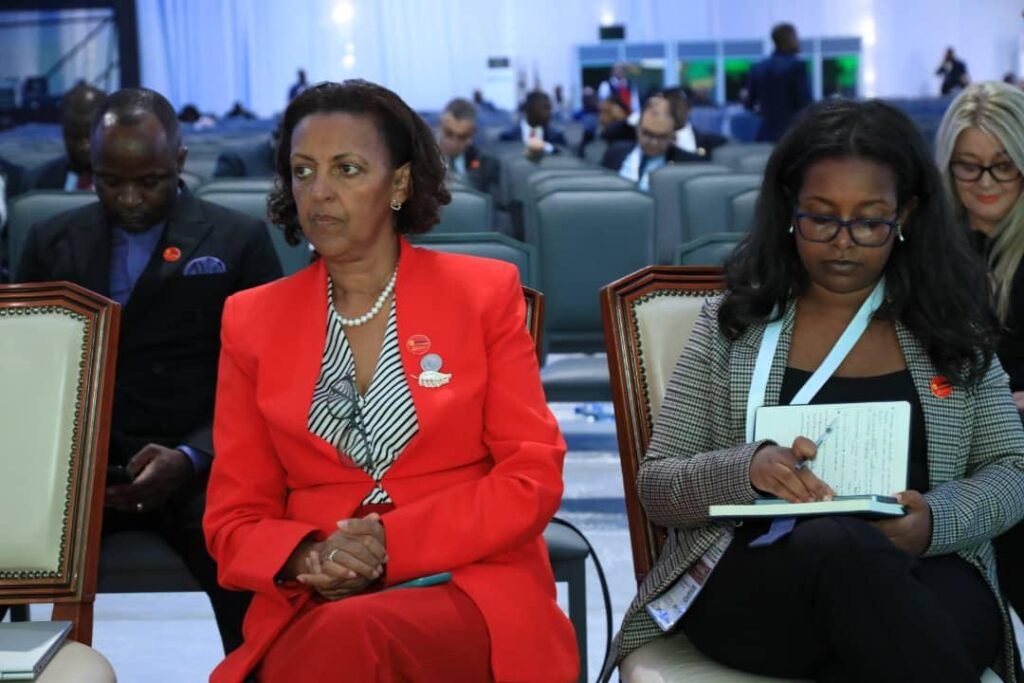The Third Infrastructure Financing Summit for Africa was held from October 28 to 31 in Luanda, Angola, under the theme “Capital, Corridors, Trade: Investing in Infrastructure for the AfCFTA and Shared Prosperity.” The Summit convened African leaders, African continental development banks, international financial institutions, private sector representatives, and policymakers. The Ethiopian delegation was composed of the Office of the Permanent Representative of Ethiopia to the AU and UNECA, Ethiopian Airlines and Ministry of Water and Energy. Ethiopia’s participation reflected its continued commitment to regional integration priorities, infrastructure development, and continental initiatives under the African Union’s Agenda 2063.
The aim of the Summit was to accelerate Africa’s capacity to finance and deliver strategic infrastructure schemes to unlock industrialization and intra-African trade. The discussions underscored that intra-African trade remains very low, approximately 16 to 18 percent compared to over 60 percent in Europe and Asia. This was attributed to infrastructure gaps, fragmented regulations, and slow implementation processes. The Summit highlighted that Africa’s annual infrastructure financing needs are only met halfwayat USD 80 billion out of a demand of USD 130–170 billion. The challenge, however, is not only insufficient capital but also the shortage of bankable projects, weak project preparation capacity, fragmented execution, and management gaps. Participants stressed the need for strong political will, harmonized continental mechanisms, regulatory reforms, and faster decision-making to shift the continent from planning to implementation.
The main content of the discussions focused on Africa’s financing sovereignty. In terms of domestic mobilization, it was mentioned that Africa has the capacity to mobilize up to USD 4 trillion from domestic financial sources, including pension funds, sovereign wealth funds, and assets from commercial banks. There was strong support for developing African credit rating systems and improving repayment discipline to enhance Africa’s financial credibility and reduce the cost of capital.
The Summit addressed key continental priorities, including financing the Single African Air Transport Market (SAATM), the Africa Single Electricity Market (AfSEM), and financing at scale for water and sanitation infrastructure. The Great Ethiopian Renaissance Dam (GERD) was mentioned as a successful example of internal resource mobilization, regional connectivity, and infrastructure ownership. Ethiopian Airlines was also highlighted as an example of how aviation infrastructure contributes to continental integration by facilitating the movement of goods, services, and people. The One Water, Sanitation, and Hygiene National Program (ONEWASH) initiative in Ethiopia was additionally recognized as a strategic model for coordinated Water, Sanitation, and Hygiene (WASH) delivery.
The Ethiopian delegation had contributed to the deliberation of the summit by reflecting, among others, on opportunities for promoting continent-wide transportation networks and sustainable water utilization. The delegation also networked with several financial institutions, including the World Bank, Green Finance Institute, and Trade and Development Bank, to seek opportunities for future partnerships.
As a key outcome, multiple Memoranda of Understanding were signed between AUDA-NEPAD and several African institutions. In addition, infrastructure investment opportunities valued at approximately US$43.9 billion were presented to investors and partners, covering key sectors such as transport and logistics corridors, the energy sector, water, and digital infrastructure. The summit also showcased the launching of the Alliance of African Multilateral Financial Institutions (AAMFI), which is the first of its kind in creating the possibility of having Africa-based financial mechanisms for infrastructure development. For Ethiopia, this opens entry points to position its strategic cross-border priority projects within these emerging continental financing windows.
The Summit underscored that Africa is at a decisive moment to move from identifying challenges to delivering solutions. The message was clear: Africa must take ownership of financing its infrastructure, leverage its domestic capital base, and accelerate integration by building strategic networks that enable trade and industrial transformation. For Ethiopia, participation in this Summit reaffirmed its role in regional connectivity and demonstrated alignment with continental objectives focused on infrastructure, industrialization, and sustainable development.

